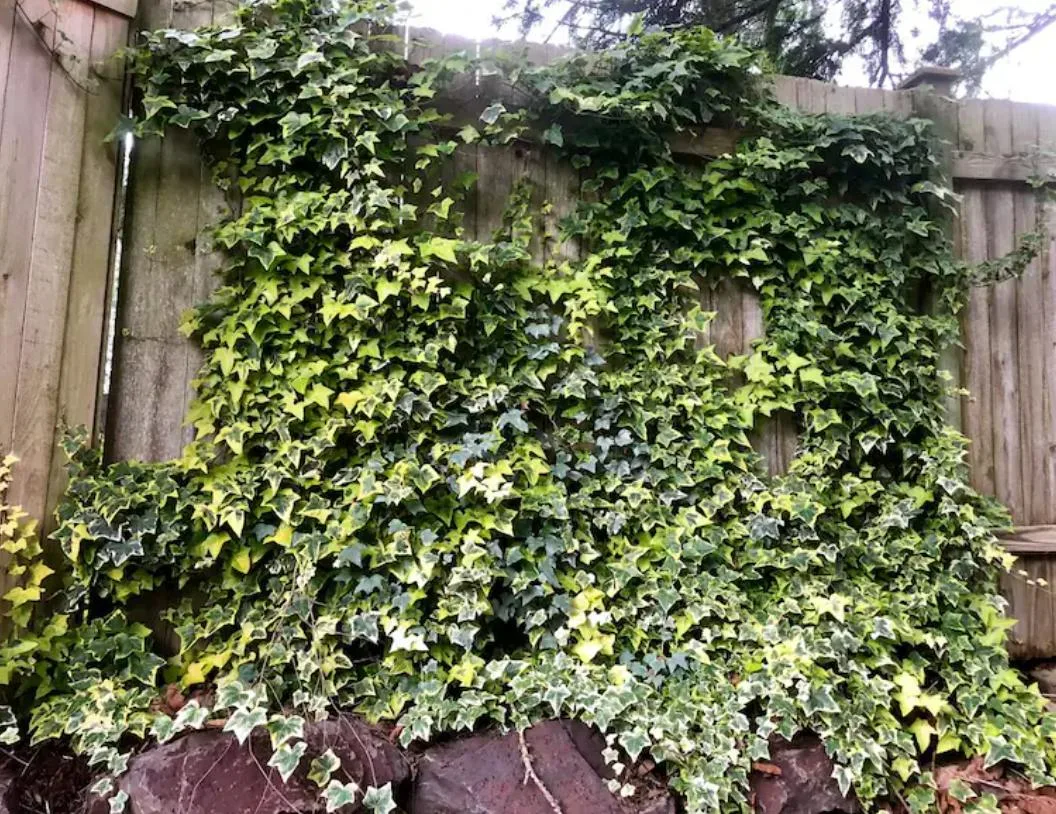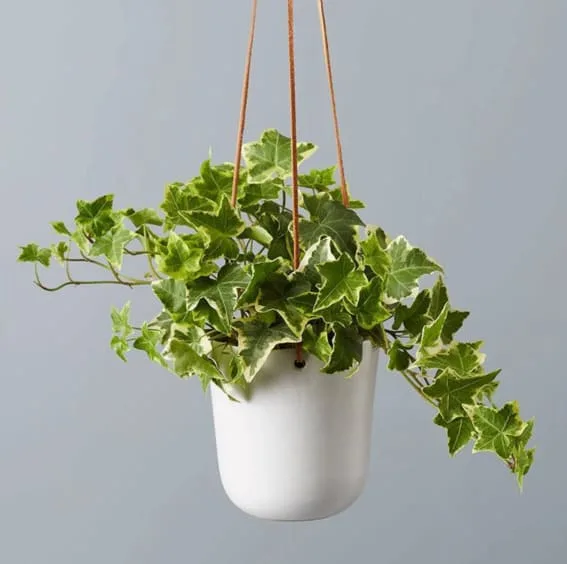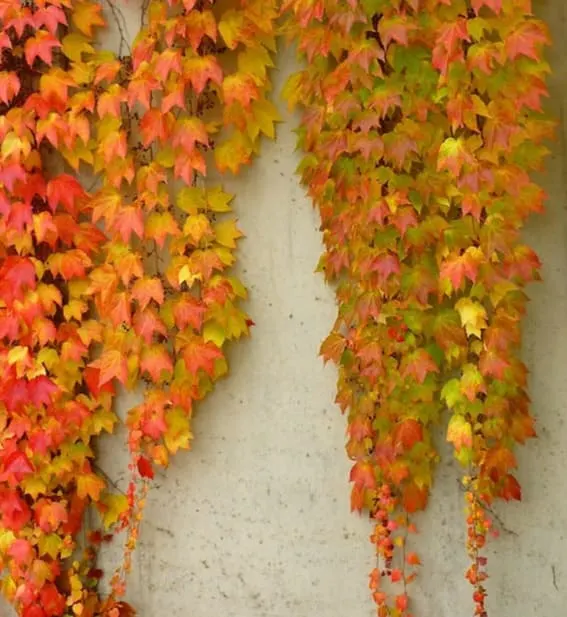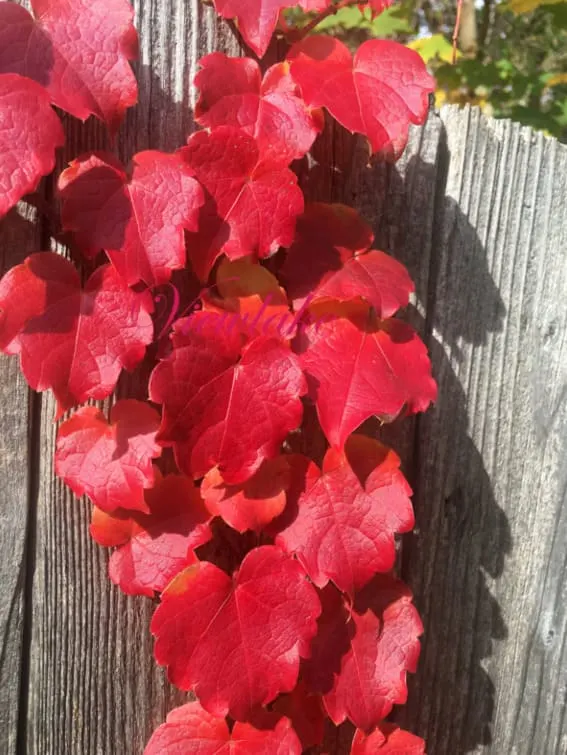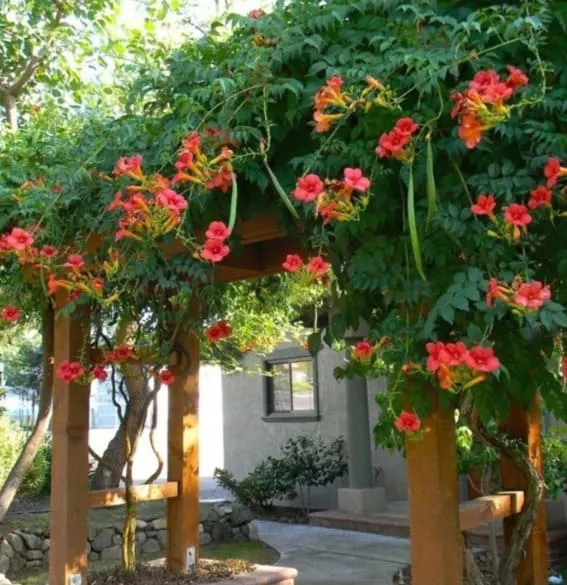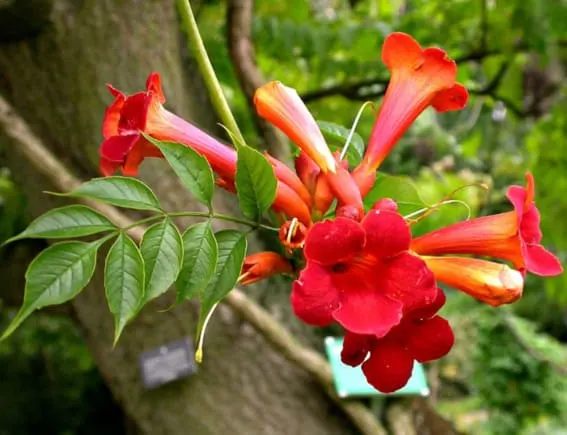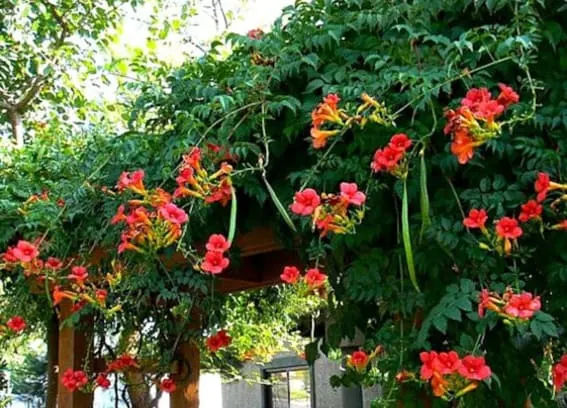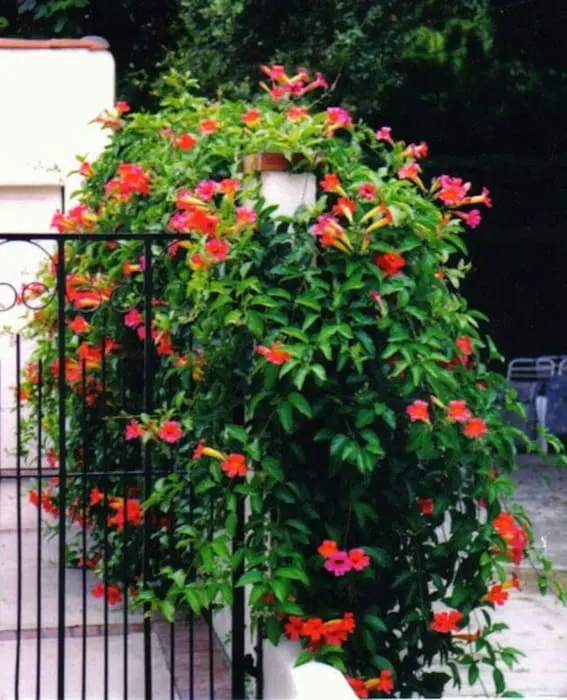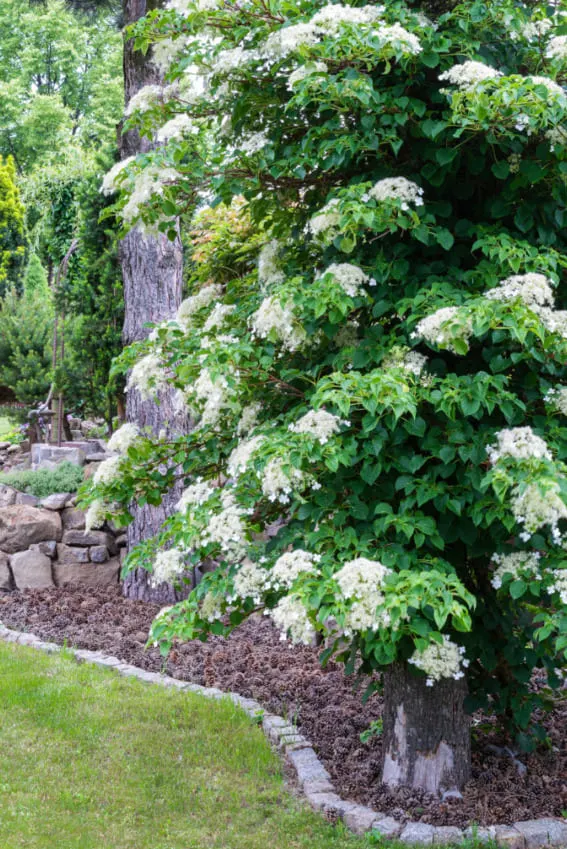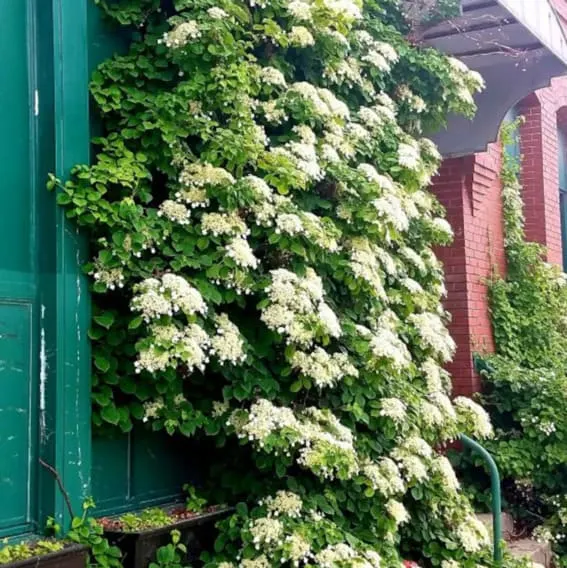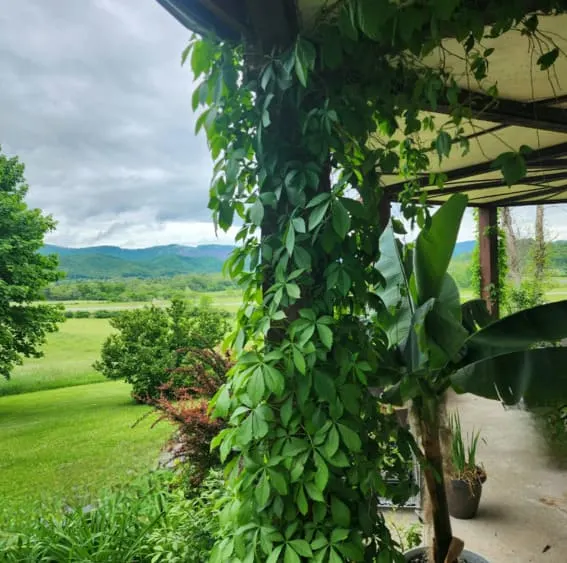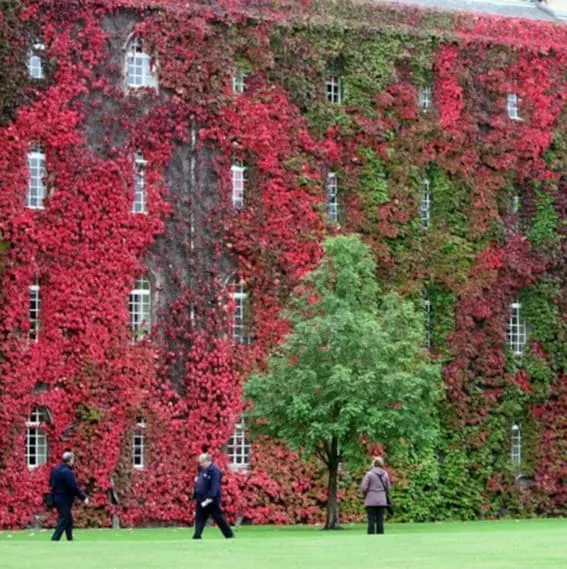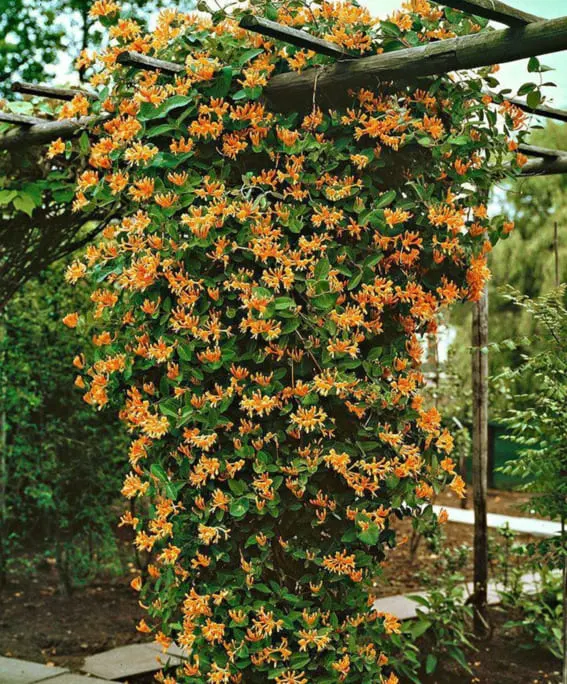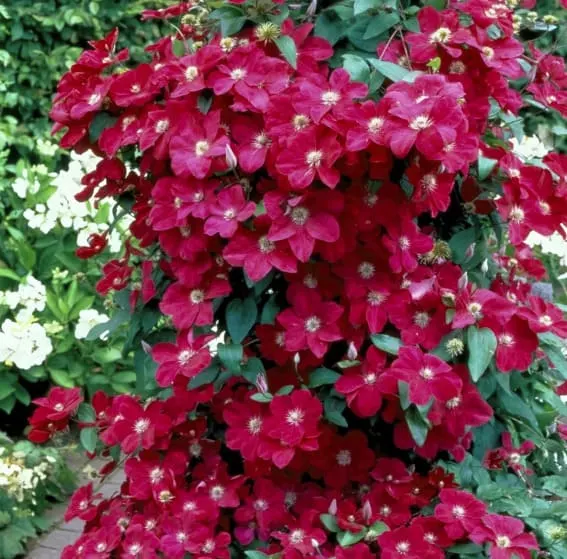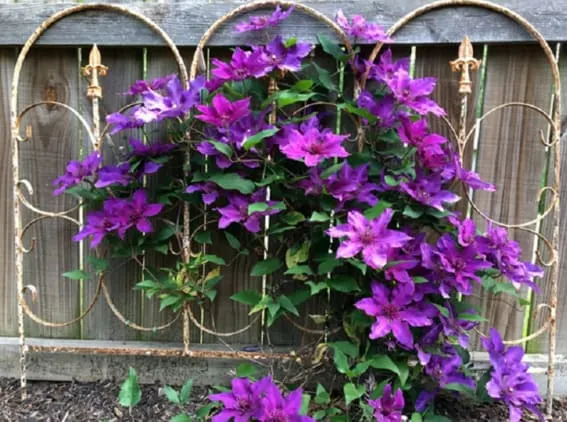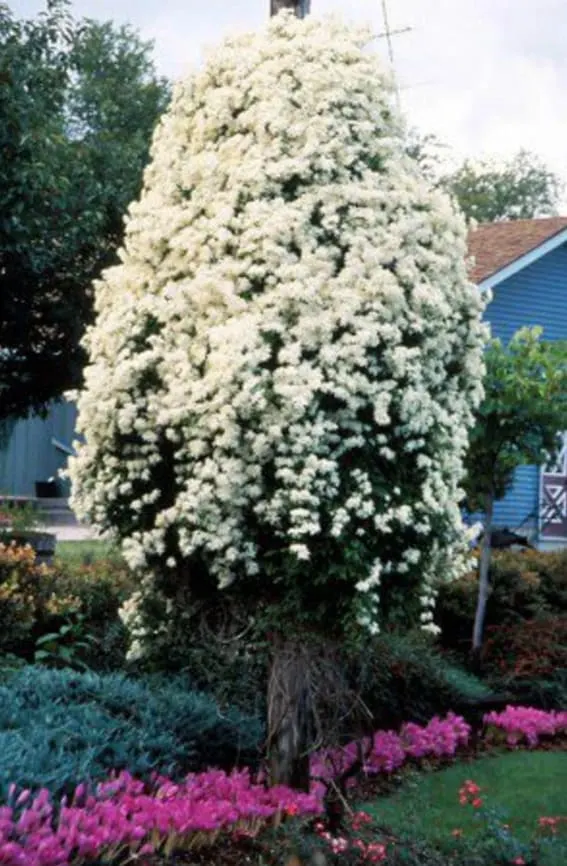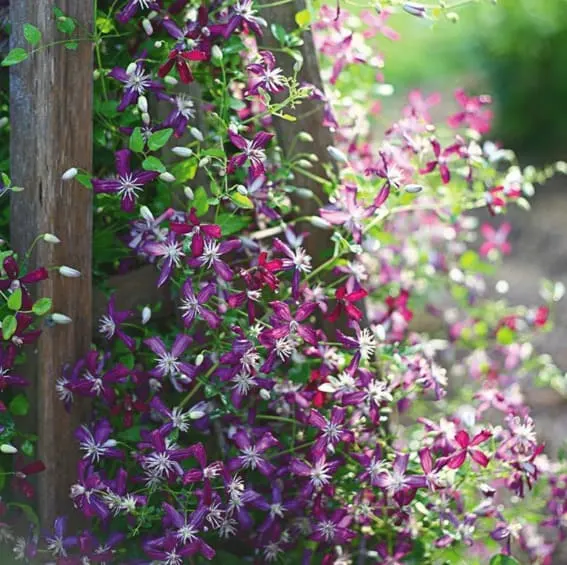Clinging Vines That Climb on Anything: A Gardener’s Guide to the best climbing and clinging vines that grow and climb almost everywhere!

Climbing vines that cling are an excellent way to show off your green thumb.
These beautiful plants are more than attractive. They’re resilient and challenging, and they can turn any wall or garden into a colorful landscape of flowers and greenery.
You can cover the walls of your home or create a beautiful garden archway. Whatever you decide to do, these vines will cling to almost anything!
Plus, clinging vines are your most reliable companions because they are the best for growing well and the easiest to care for.
Let’s take a look at how these vines cling and climb naturally in nature!
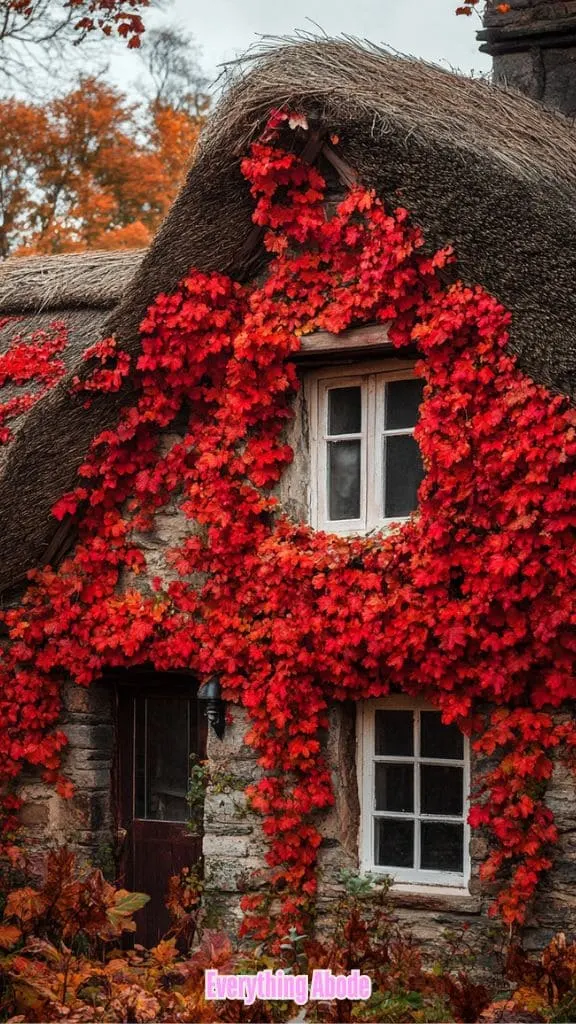
RELATED: Mediterranean Garden Ideas: Crafting Your Own Outdoor Sanctuary
How Clinging Vines Climb
Clinging vines use tendrils, aerial rootlets, and adhesive pads to climb walls and other structures.
Tendrils wrap-around supports while sticky substances secure aerial rootlets to walls or structures. The sticky substances are attached via sticky pads clinging to them, allowing them to ascend via walls and other structures.

Climbing Mechanisms
Vines use various climbing methods: tendrils wrap themselves around objects, aerial rootlets attach themselves to surfaces, and adhesive pads secrete a sticky substance; some species, like Wisteria vines, even use twining stems that wind around supports.
What Are the Advantages of Clinging Vines?
Clinging vines enhance garden aesthetics by providing vertical greenery and lush foliage, optimizing space utilization, providing habitats for wildlife, and increasing biodiversity.
Their vibrant colors and textures make them attractive additions to any landscape design scheme.
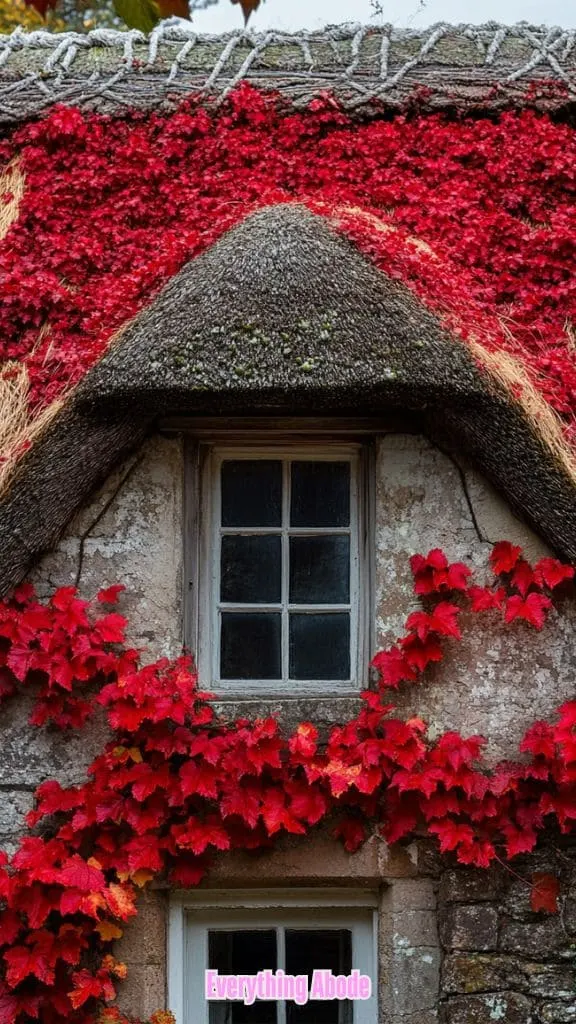
Environmental Benefits
Clinging vines enhance air quality by absorbing carbon dioxide and emitting oxygen.
They also stabilize sloped terrain, limit erosion, and help regulate temperatures by decreasing the heat absorption of building surfaces if planted as green walls.
Structure Benefits
These vines create natural privacy screens, decrease wind speed, and serve as noise barriers.
Furthermore, they shade vertical structures while adding aesthetic value that makes gardens and urban areas more pleasurable.

Considerations for Planting Clinging Vines
Choose a site with suitable sunlight and soil conditions. Ensure sturdy support structures and regularly prune to manage growth.
Proper placement and care prevent vines from becoming invasive or overwhelming other plants.
Potential Damage to Structures
Adhesive pads and aerial rootlets can damage paint and masonry.
Heavy vines can strain damaged supports, and dense foliage can trap moisture, leading to mold and rot.

Maintain Invasiveness
Some vines spread rapidly, requiring regular pruning to control growth.
Furthermore, checking regularly for pests and diseases is necessary to keep these vines healthy and prevent them from becoming invasive.
Compatible Structures for Climbing
Trellises, arbors, and pergolas make ideal supports for vines to climb upon.
Furthermore, walls and fences can become green to add visual interest and privacy to any landscape.
Let’s examine which clinging vine best suits your indoor or outdoor space!
Here are the 7 BEST Clinging Vines That Climb On Almost Anything!
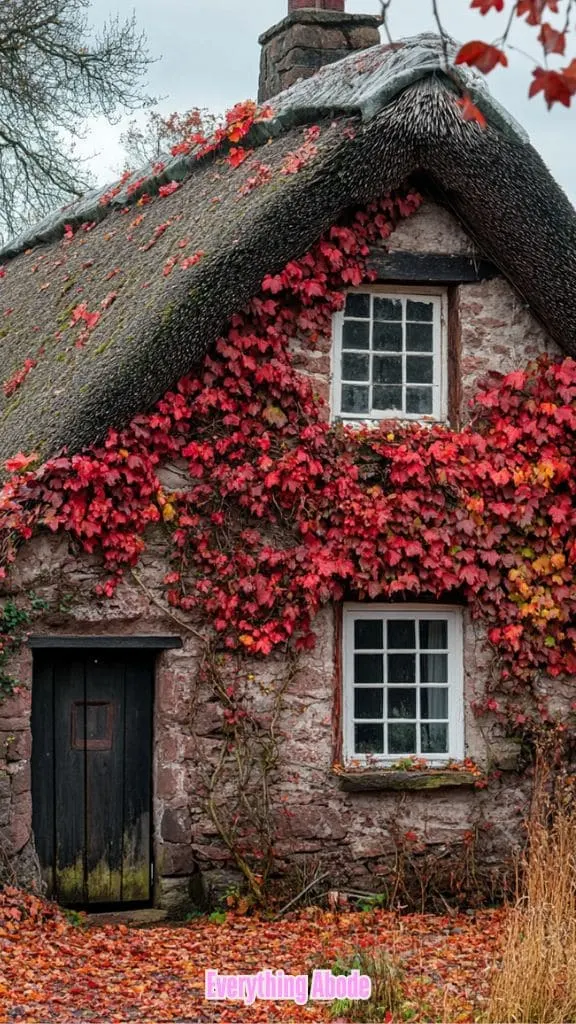
*These best climbing vines are all shoppable! Just click the image to shop the climbing vine you love most!
1. English Ivy (Hedera Helix)
With its evergreen leaves and dense crown, English Ivy has long been a go-to houseplant choice among plant enthusiasts who appreciate vine-like houseplants. It thrives in shaded corners or partial sun exposure – making this evergreen plant easy to decorate in corners or shelves!
Growing Habits: English Ivy can spread rapidly across fences, walls, and ground surfaces with just the right combination of water and care, quickly covering fences, walls, and ground surfaces in no time. At its height, however, it may remain under control while expanding moderately.
Best Growing Conditions: This houseplant thrives in well-drained soil and can tolerate different lighting conditions, from full shade to some sun exposure.
Uses: Growing English Ivy outdoors is a great way to cover soil, control erosion, or add an extra green accent in vertical spaces.
Professional Advice: Regular pruning is essential to controlling overgrowth and preventing pests like spider mites and aphids from spoiling the gardening experience.
2. Boston Ivy (Parthenocissus tricuspidata)
Boston Ivy is ideal for those who enjoy watching their landscape transform with each season. Famed for its vibrant green leaves that transform to vibrant red in fall, this climbing vine creates stunning backdrops against walls, fences, or trellises.
Growing Habits: Boston Ivy is an impressive fast grower, covering large areas quickly with lush foliage. Its tiny adhesive discs adhere to surfaces securely for an effective natural wall cover solution.
Best Growing Conditions: This tough plant thrives in well-draining soil and can adapt to various lighting conditions, from full sun to partial shade, making it an excellent choice for urban environments.
Uses: Boston Ivy can bring vertical greenery and reduce wall heat absorption while creating a vibrant autumn display in your garden. Furthermore, its erosion-control properties make it an excellent addition to sloped terrains.
Professional Advice: Regular pruning of Boston Ivy helps keep its shape while protecting against overtaking structures.
Keep an eye out for pests like aphids and scale insects; plant away from delicate surfaces where its adhesive discs could cause issues when planted near fragile surfaces.
3. Trumpet Vine (Campsis radicans)
Add tropical flair to your garden with the Trumpet Vine, known for its stunning trumpet-shaped flowers in shades of orange, red, and yellow. Hummingbirds and butterflies flock to its brightly-hued flowers, bringing lively elegance into any outdoor space.
Growing Habits: The Trumpet Vine is a fast-growing vine, capable of reaching impressive heights quickly. With woody stems and lush foliage that form dense canopies, its woody stems form an impressive vine canopy suitable for covering fences, trellises, or arbors.
Best Growing Conditions: For optimal blooming, this hardy plant requires well-drained soil with total sunlight exposure; partial shade will produce fewer flowers. Once established, however, its drought resistance makes maintenance low-key.
Uses: Trumpet Vines make great additions to any garden. They add vertical interest while serving as natural privacy screens or colorful focal points. Their vibrant blooms add visual interest and are attractive in any landscape setting.
Professional Tips: Regular pruning is critical to controlling its rapid growth and preventing it from becoming invasive. Provide sturdy support for its heavy vines while watching for pests such as aphids and scale. Always wear gloves when handling this plant, as its sap can cause skin irritations.
4. Climbing Hydrangea (Hydrangea anomala petiolaris)
Climbing Hydrangeas are indispensable additions to any garden space. Their lush green leaves and fragrant white lace cap flowers add elegance and charm to any vertical space. With their long vines that spread beauty through any vertical space, this plant can transform it into an idyllic garden escape.
Growing Habits: The Climbing Hydrangea has an easy-care, slow start that quickly becomes robust growth over time. It utilizes aerial rootlets to adhere to surfaces like walls, trellises, and even large trees for support – perfect for walls, trellises, or trees that cannot provide direct soil support.
Best Growing Conditions for Climbing Hydrangeas: For optimal success, this beauty thrives in well-drained, moist soil and can flourish in full and partial shade. It prefers morning sunlight with afternoon shade, making it suitable for garden spots across all environments.
Uses: Climbing Hydrangeas make great vertical accent plants for walls, fences, and pergolas, adding vertical interest while providing lush cover. Their beautiful blooms attract pollinators to improve your garden ecosystem and ultimately enhance it further.
Professional Tips: Patience is vital, as establishing and blooming this climbing plant takes time. Pruning helps maintain the vine’s shape while encouraging more prolific flowering. Sturdy support should also be provided since mature vines can become quite heavy. Inspect for pests like aphids and scale, as this will keep pests at bay.
5. Virginia Creeper (Parthenocissus quinquefolia)
Turn your garden into an autumn wonderland with the Virginia Creeper.
Famed for its colorful leaves that bloom into vibrant red and purple shades in fall, this versatile climber adds wild beauty to any space, making it a go-to choice among gardeners who value seasonal color!
Growing Habits: The Virginia Creeper is an aggressive vine with rapid growth that can cover large areas. Its five-lobed leaves offer a lush, green backdrop in spring and summer before blooming into vibrant hues in autumn. Small adhesive discs help secure its attachment to surfaces like walls, fences, and arbors—ideal places for this beauty to live!
Best Growing Conditions for Virginia Creeper: This hardy plant needs well-drained soil with moderately acidic pH levels for optimal growth and can adapt to various lighting conditions, from full sun to shade. Once established, its drought resistance makes it an easy, low-maintenance choice for busy gardeners.
Uses: Ideal for adding vertical greenery to any garden, the Virginia Creeper can add vertical greenery to add vertical appeal while offering privacy, heat absorption reduction, and fall color explosion. Furthermore, its erosion control properties help prevent slopes from erosion occurring when used strategically on slopes and banks.
Professional Tips: Pruning regularly will keep its vigorous growth under control and prevent it from becoming invasive. When planting, ensure it is placed away from delicate surfaces, as its adhesive discs can be hard to remove. Watch out for pests like aphids and spider mites, and trim any dead or damaged stems to maintain the health of your vine.
6. Honeysuckle Climbing Vine (Lonicera)
Honeysuckle’s tubular flowers in shades of red, yellow, and white will add a sweet fragrance and beautiful charm to your garden. Plus, its climbing vine attracts hummingbirds and butterflies for extra charm in outdoor spaces!
Growing Habits: Honeysuckle is a fast-growing vine that quickly covers trellises, fences, and arbors with twining stems and lush foliage that bears fragrant blossoms that add an eye-catching element to any garden.
Best Growing Conditions: This adaptable plant should be grown in well-drained soil in full sun to partial shade for optimal growth. At the same time, versatile and hardy enough to tolerate various environments, optimal results can only be seen with plenty of sun.
Uses: Honeysuckle can create stunning floral displays on vertical structures, natural privacy screens, and whimsical flourishes to garden arches and pergolas. Furthermore, its nectar-rich blooms attract pollinators, enhancing your garden’s biodiversity.
Professional Tips: Routine pruning helps maintain its shape and increase blooming frequency. Be wary of its vigorous growth to avoid becoming invasive. Provide sturdy support for its climbing stems. Monitor for pests like aphids or powdery mildew. Water deeply during dry spells to keep it flourishing.
7. Clematis Climbing Vine (Clematis spp.)
Clematis, the king of climbing vines, will bring elegance and color into any garden space. Renowned for its stunning star-shaped flowers in shades spanning deep purple to vibrant pinks and pristine white, Clematis transforms any vertical space into a floral paradise.
Growing Habits: Clematis is a prolific climber, using twining leaf stems to scale walls, fences, and arbors. It produces abundant blooms from early spring through late summer in some varieties.
Best Growing Conditions For Clematis: This adorable plant needs well-drained soil with full sunlight or partial shade conditions for optimal growth.
For maximum results, place its roots under shade but expose its foliage; adding a layer of mulch will keep the roots cool and damp.
Uses: Clematis makes an attractive accent for trellises, pergolas, and garden walls by providing vertical interest and vibrant color. Its stunning blooms make a striking visual display in any landscape, making this plant one of the premier choices!
Professional Tips: Pruning regularly is essential and may depend on the variety of plants being pruned. Early flowering varieties should be cut back after flowering, while late bloomers should be cut back during early spring.
Ensure Clematis is adequately supported during its vigorous growth; watch out for pests such as slugs and aphids; water regularly to maintain soil moisture content.
Cascading vines provide aesthetics and functionality in one package, making them an essential feature in any home or garden.
Cared for correctly, these plants can add tremendous value to your outdoor space and allow you to experience all its advantages year-round.
No matter your gardening experience level or goals, our list will offer something that will satisfy your green thumb and transform your backyard or home into an inviting sanctuary.
What clinging vine are you planning on starting with? Please share with us in the comments below!!
UP NEXT: 21 Tasty Fruit-Bearing House Plants You Can Enjoy Indoors
Author: Everything Abode
Welcome to Everything Abode, your daily inspiration for every activity at home!
Our goal is to inspire you to live an elegant and chic lifestyle from the comfort of your home.
We’ll help you express yourself through authentic style, aesthetic beauty, and stylish home decor.
Mediterranean Garden Ideas: Crafting Your Own Outdoor Sanctuary
Abelia Perennial Plant Growing Guide: How to Grow and Care for Abelia
15 Enchanting Cottage Core Garden Ideas to Transform Your Outdoor Space
8 Beautiful White Flowers To Plant For Added Elegance
Tall Garden Phlox: A Beautiful and Easy-to-Care-For Perennial Plant
14 Cute Miniature Dwarf Vegetables & Fruit Plants For Tiny Gardens
Subscribe to Get the Tools That Make My Blog Successful!

When you join my newsletter, I'm going to send you insider advice and tools that I use to grow my blog! I only save the BEST for my email list so don't wait!

